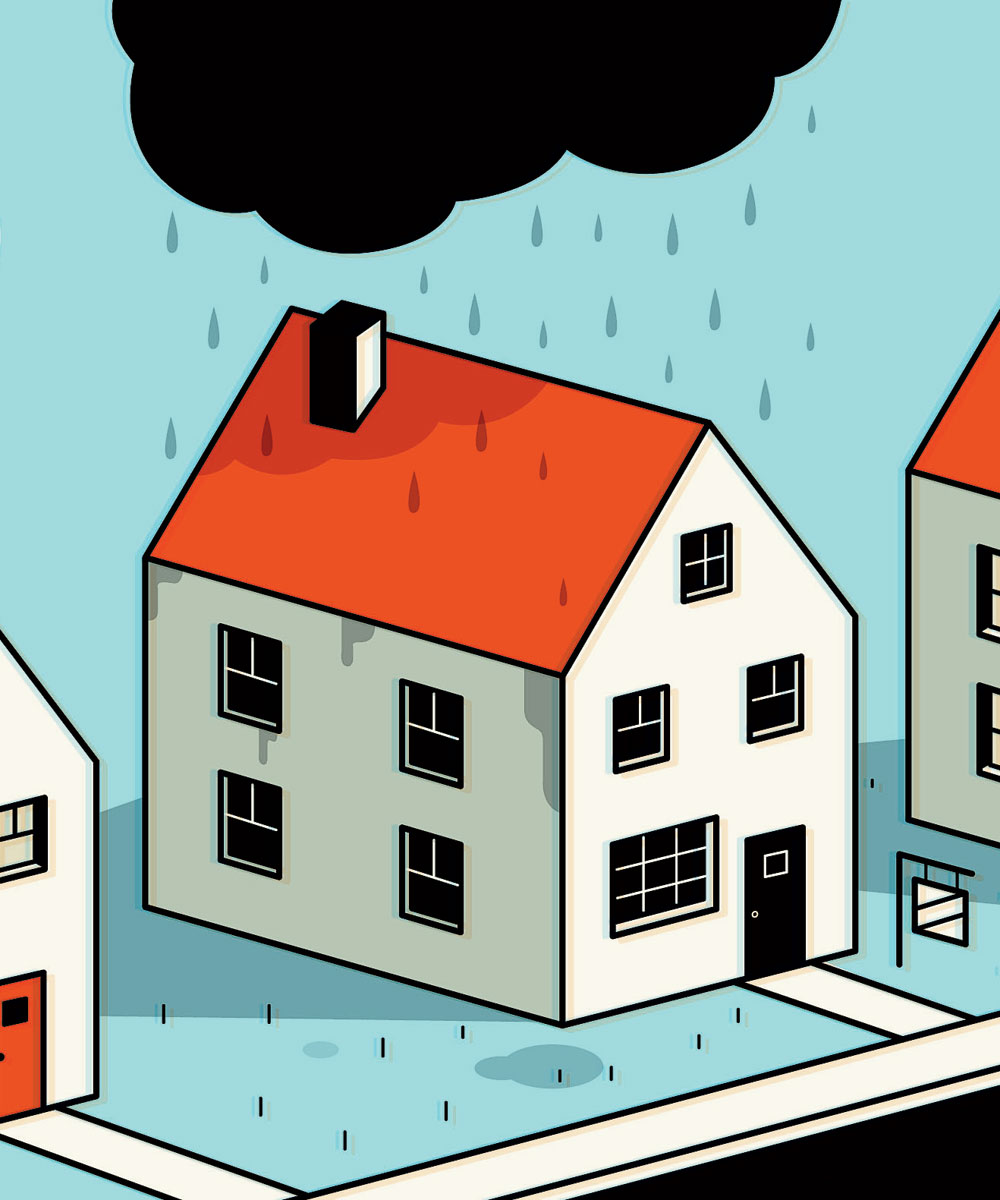Not long into our search this summer for a three-bedroom house in Chicago, it became clear that my wife and I were about to pay the most money we’d ever spent for the worst thing we’d ever bought. Many of the places we saw, to quote one of my dad’s Tennesseeisms, were rode hard and put up wet.
The city’s housing market struck us as a kind of Walking Dead scenario: When the trouble finally faded in the past year, all the crappy houses festering through the recession stumbled out into the light of day looking for some fresh down payments to devour. And there we were, plumped up from the sale of our two-bedroom Andersonville condo. I soon realized why it had been snapped up in less than 72 hours: We had just let go of what may have been the only normal Chicago property for sale all summer in our price range—under half a million bucks. We had bought our condo in foreclosure in April 2013, right around the time the city’s real-estate market bottomed out, and it had shown some signs of its misfortune. The oven racks were missing. Ditto the refrigerator shelves. The microwave keypad was punched in.
But it was basically perfect compared with some of the foreclosed tragedies we recently toured on the North Side. The trouble started with the listings that didn’t even hide how messed up the house was. Phrases like “drive-by only” or “no guarantee of vacancy upon possession” jumped out, as did things like “CASH ONLY LEGIT BUYERS CALL CHUCK.” One place in Lincoln Square was so tempting I did a walk-by with stroller. The house seemed OK, and a guy was strumming a guitar on its stoop. Great, I thought. I fed my two-year-old a line: “Nice gee-tar, buddy!” Nothing. So I said hello. Nothing. I was actually shouting, “Hello! Do you live here?” when I thought to myself: What the hell am I doing? We never did get inside the house—and probably should have taken my sidewalk misadventure as a bad omen.
A place that we saw in Avondale had been liberated of its appliances. By now that’s a foreclosure cliché, but there was more: These owners had gotten so desperate they’d systematically unscrewed and taken all the light switch covers with them. One abandoned baseball-themed bedroom had a boy’s name hand-painted on the wall—eerily, the same name as one of our kids. So, honey, do we take the place of a family just like ours in the house that ruined their lives? How would this story end—like The Shining?
The sadness in some houses was less obvious. A “downsizer” who, the photos in the foyer revealed, had raised her family in the house was moving because the place was now too much for her. Based on the level of neglect, I guessed her husband had probably died years ago. The loneliness was overwhelming.
Sometimes the surroundings of an otherwise decent house could, in a matter of seconds, reveal a scene of utter insanity. For example, you might walk outside to find a neighbor in a bathrobe chasing unleashed dogs down the sidewalk while half a dozen cats watched from her windows. Or a giant fiberglass boat perched upside down on blocks in the backyard next door. Or a shopping cart chained to a tree, piled high with a man’s worldly possessions. (This happened in Mayfair, Albany Park, and Uptown, respectively.)
But usually the problem was just the house. We got suckered into seeing so many flips. They looked nice in the listing photos—all that historical charm and central air! But walking in was like showing up for a date you made online and realizing too late that the person had gained 30 pounds and gone bald since the profile pictures. The surest sign of a bad flip is the vessel sink—just plain hideous. Beware the vessel sink. Beware the boom-time construction, too. We saw a place built in 2007 that was in much rougher shape than one built in 1907.
Still, the oldest houses always had the weirdest, worst secrets, particularly in the basements. Short-doored closets with locks on the outside that looked meant for imprisonment. Basements with such low, uneven ceilings that you’d hit your head halfway across the space. Rooms shaped like railroad cars, best suited for lining up five twin beds end to end. Wood paneling like you wouldn’t believe. And the stench. The stink of one place—imagine the bottom of a hot garbage can in an abandoned cafeteria—stayed in my nose for hours afterward, like a souvenir. The owner was a violin instructor. Go figure.
Although many Chicago homes have rooms so small that you begin to wonder about the stature of humankind at the time of construction, one house we saw was actually too big for our four-person family. The converted two-flat in Irving Park—which had closets that would pass for bedrooms in Brooklyn—had been clad in the cheapest possible materials. The decision made sense: With such vast square footage to cover, you couldn’t possibly splurge. Miles of budget carpet blanketed the floors. The kitchen backsplash was a field of bathroom tile. We walked away, intimidated by our rough calculations of the cost to paint: what we paid to paint our condo, multiplied by five.
In fact, when this is all over, we may be back in another condo. We’ll remember this futile search as a roundabout, ridiculous way to tack on a third bedroom. Because with a condo, at least, other people are there to keep the crazy at bay. You’re all too busy stopping the roof from collapsing to bother stealing light switch covers.
Postscript
A little more than a month after filing this dispatch for Chicago magazine, the author shared this coda to his story:
We closed on a condo today that is bigger and beautifuller than anywhere I thought I'd ever live
— Harry Sawyers (@harrysawyers) September 30, 2014



